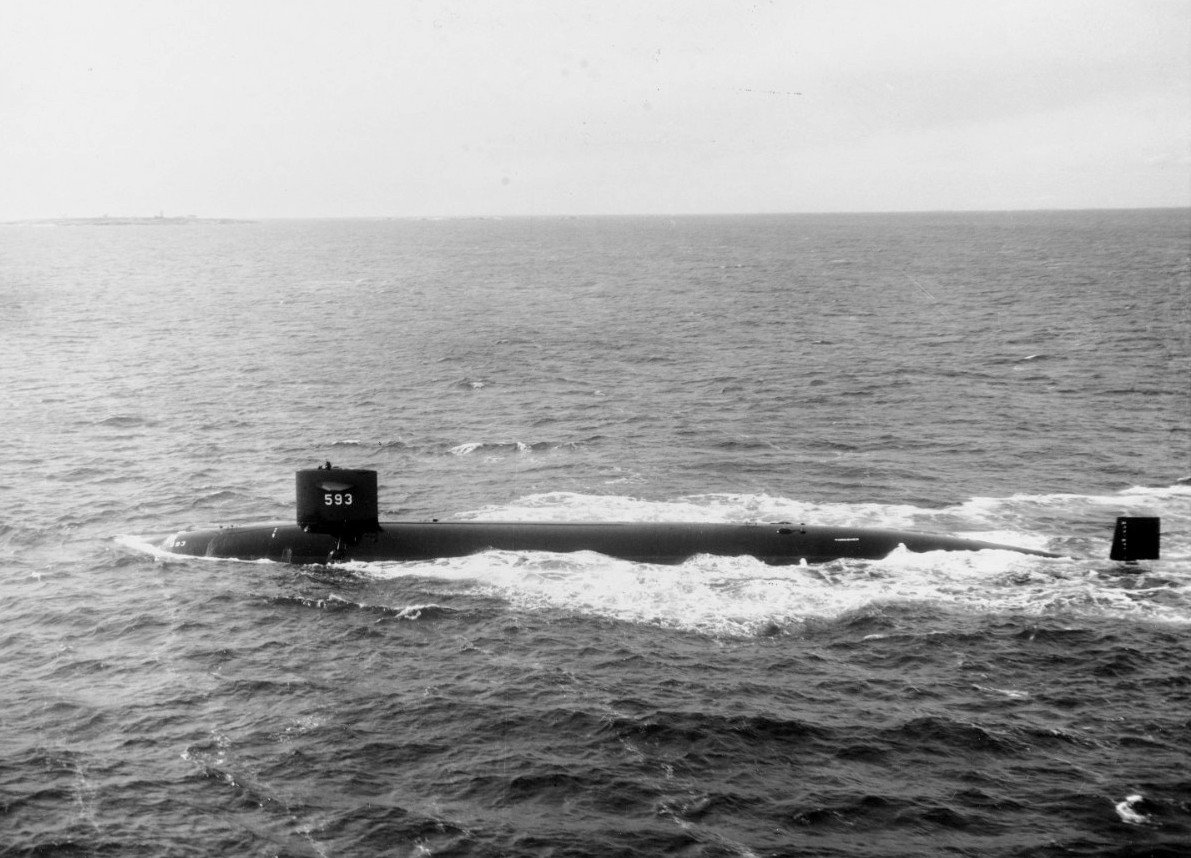
The rolling release of a previously secret report and investigation of the 1963 loss of USS Thresher (SSN-593), the Navy’s worst submarine disaster, is providing new lessons for today’s sailors and shipbuilders, said the former submarine commander who brought suit to declassify the documents.
Now that the documents are declassified, submarine safety instructors, “can take it home, read it and take it into the classroom,” James Bryant, a retired Navy captain who served on three Thresher class submarines, said on Saturday. The former commander of USS Guardfish (SSN-612) added that graduate engineering students can also glean the material that has been declassified to better understand how to prevent future accidents from becoming disasters that sank Thresher.
On April 10, 1963, 129 sailors died when Thresher was lost during a deep dive test off the East Coast.
Interviewed for the Naval Historical Foundation, Bryant, who served 23 years in the Navy, said due to Cold War pressures there was a rush to complete tasks from shock tests to fast cruises to move Thresher along its course to operational readiness. If they “had taken a little more time and found the problems before the problems found them,” the accident wouldn’t have happened.
In releasing the documents, “the Navy has done itself a major favor,” Stephen Walsh, who worked in the Submarine Safety Program (SUBSAFE) for decades and co-authored an April Proceedings article with Bryant on the Freedom of Information request and suit.
So far, four sets of Thresher documents have been released along with two additional sets of related reports requested by Bryant and his teams. The last occurred in December under a rolling timeline called for by the court.
What Bryant, Walsh and historian Norman Friedman agreed on is there was no single cause of the submarine’s sinking. They also said there was no Navy cover-up of the disaster beyond national security concerns.
Friedman, author of major works on submarines since World War II, said “under the circumstances, people took chances.” He added that the Soviets had launched their first nuclear-powered submarine in 1958 and there was a pressing need for larger, faster submarines like Thresher that were capable of “diving almost twice the depth of World War II ships,” for ASW. At the same time, the first Polaris-class ballistic missile submarines were entering the fleet, requiring two crews and putting more pressure on the training pipeline for crew and nuclear certification for officers.
The past reliability of nuclear power was a factor in Navy thinking then and the belief that there was “back-up” in the systems to ensure propulsion and the ability to surface in an emergency. “That they would lose all power, they never considered that,” Friedman said.
“That’s a different world than we’re in now.”
The new Soviet threat and sense of urgency to counter it was also the mindset prevalent among members of the board of inquiry investigating the circumstances of the Thresher disaster. Bryant said that when Thresher sank, the Navy had 28 nuclear-powered submarines in the fleet with 36 more planned, including ballistic missile subs.
Walsh said the Navy underestimated the risks at the time, including how to rescue crews from these new depths. “There were so many contributing causes” to the sinking.
Friedman said, “when you read the court of inquiry [you realize] how complicated the machinery is,” down to the speed of pumps. There’s also the human factor. For the crew “you have to know where to go instinctively” when something starts to go wrong to prevent disaster.
Bryant said still to be released is the testimony of the chief of naval personnel at the time. “I suspect that there will be some fireworks” when it is declassified.





